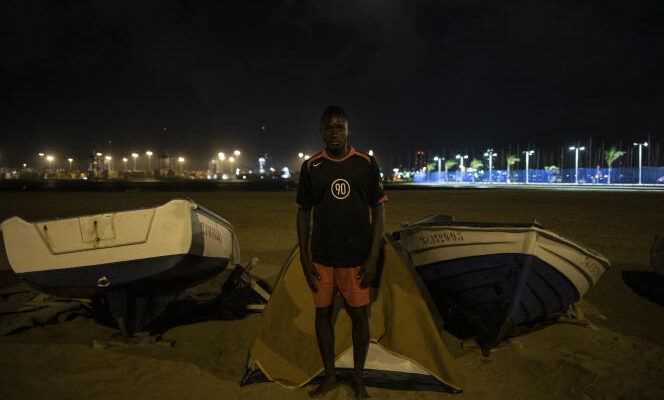The International Organization for Migration (IOM) said to herself “ extremely concerned “, in a press release dated Friday, September 24, by the sharp increase in the number of deaths on the road to the Canaries. Since the beginning of the year, the United Nations-dependent body has recorded 785 deaths, among them 177 women and 50 children, twice as many as in 2020. During the month of August alone, nearly 380 migrants found death while seeking to return to the Spanish archipelago. A figure that could be even higher, given the many “invisible shipwrecks”. According to the NGO Caminando Fronteras, in contact with migrant communities, 1,922 people died during the crossing during the first half of 2021.
On August 20, an inflatable boat overturned 250 km from the Canary Islands coast with 52 passengers. Only one person survived, she is still hospitalized. A canoe that left on August 15, which was lost 500 km from the Island of El Hierro, was located after 14 days adrift, with 26 survivors on board: 29 people including seven children had already died. In Fuerteventura, around thirty migrants died at the end of August in a boat that left Morocco. And so on. The list of tragedies goes on and on over the months.
Their number could exceed 40,000 over the year
Between the 1er January and September 14, more than 11,000 migrants landed in the Canaries, according to figures from the Spanish Ministry of the Interior – almost twice as many as in the first nine months of 2020 (+ 117%). If this trend were to continue during the next three months, knowing that the crossings are concentrated mainly in autumn, – a period favored by migrants to take the dangerous Canary Island route, the waters of the Atlantic Ocean being deemed to be calmer – their number could exceed 40,000 over the year. Much more than during the previous “pirogue crisis” of 2006, when 31,000 migrants entered the archipelago.
However, unlike 2020, when an unexpected flow of migrants overflowed the Canaries, with eight times more migrants than in 2019, the islands say they are “Ready” to cope with the increase in migratory pressure. The “Canary Islands Plan”, set up with the Spanish government in 2020, has provided the islands with nearly 7,000 emergency housing places, of which less than a thousand are currently occupied. “We are much better prepared because we have made an enormous effort”, summed up the Minister of Migration and Social Inclusion, José Luis Escriva, at the beginning of September. Above all, the resumption of migrant transfers to the peninsula, paralyzed in 2020, made it possible to free up infrastructure and avoid scenes of migrants sleeping in the street, which had provoked outrage in the Canaries.
You have 40.56% of this article left to read. The rest is for subscribers only.
